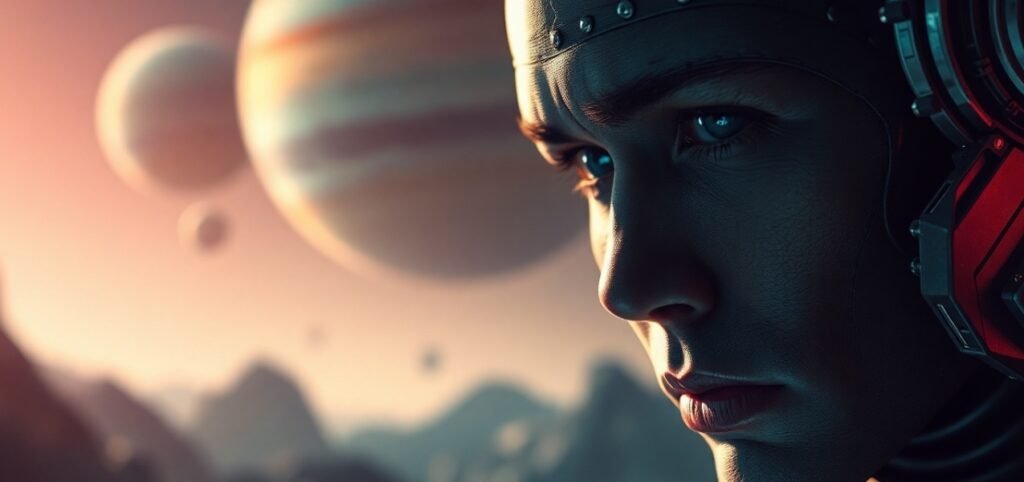The Solar System is an incredible place, full of wonders that are both vast and awe-inspiring. It’s not just about Earth, the planet we call home, but also about the many other celestial bodies that share our orbit around the Sun. To understand the Solar System, it’s helpful to think of it as a giant cosmic neighborhood, where each planet, moon, asteroid, and comet plays a role in a complex dance around the Sun.

What is the Solar System?
The Solar System is a system of the sun and its eight planets, their satellites, and a host of other objects such as asteroids, comets, and others. The Sun itself is a star, and everything in the Solar System revolves around it because of the force of gravity that is exerted by the Sun. All the objects in the respective system should be thought of as being satellites, with the Sun as the ‘heart’ of the system.
The Planets: Our Cosmic Neighbors
The planets in our Solar System are divided into two main groups: terrestrial planets and gas giants.
1. Terrestrial Planets:
- Mercury: The smallest planet and the closest to the Sun, Mercury has extreme temperatures, from very hot to very cold.
- Venus: Known for its thick clouds, Venus is often called Earth’s “twin” because it’s similar in size. However, its surface is incredibly hot due to a runaway greenhouse effect.
- Earth: Our home planet, Earth is the only known planet to support life, thanks to its atmosphere and water.
- Mars: The “Red Planet,” Mars has the largest volcano in the Solar System and signs that it may have had water in the past.
2. Gas Giants:
These planets are farther out and are mostly made of gases like hydrogen and helium. They are:
- Jupiter: The largest planet in the Solar System, Jupiter is a gas giant with a massive storm called the Great Red Spot, which has been raging for hundreds of years.
- Saturn: Famous for its stunning ring system, Saturn is another gas giant. Its rings are made of ice, dust, and rock particles.
- Uranus: Known for its unusual tilt, Uranus spins on its side compared to the other planets, making its seasons extremely unique.
- Neptune: The farthest planet from the Sun, Neptune is known for its deep blue color, caused by methane in its atmosphere. It also has strong winds, the fastest in the Solar System.
Moons: The Planet’s Companions
There are many moons in the Solar System, and moons are natural satellites that revolve around their respective planets. There is only one natural satellite in orbit around Earth – the one we refer to as the Moon. But some of them have many moons. For instance, Jupiter has more than 80 moons; similarly, Saturn has over 80 moons.
Some moons are rather fascinating. For instance, Europa one of Jupiter’s moons, is coated with ice, and there might be a liquid ocean beneath it, perhaps with life. Titan is one of the most ‘Earthlike’ places in the Solar System, despite being a moon of Saturn; it has a dense atmosphere and large, obvious mourning masses of liquid methane, known as lakes.
Other Objects in the Solar System
In addition to the planets and moons, there are other fascinating objects in the Solar System.
1. Asteroids: Asteroids are rocky bodies that orbit the Sun, mostly found in the asteroid belt between Mars and Jupiter. They range in size from small pebbles to large objects that can be hundreds of kilometers wide. Some asteroids have even been identified as potential threats to Earth.
2. Comets: Comets are icy objects that originate from the outer edges of the Solar System. When they approach the Sun, the heat causes them to release gas and dust, creating a glowing tail. The most famous comet, Halley’s Comet, passes by Earth every 76 years.
3. The Kuiper Belt and Oort Cloud: Beyond Neptune, there are other icy objects, such as Pluto (once considered the ninth planet), which reside in the Kuiper Belt. Farther out, the Oort Cloud is a hypothetical region that is believed to be home to billions of icy comets.
The Sun: The Heart of the Solar System
At the center of it all is the Sun, a giant ball of hot, glowing gases that provides energy to the entire Solar System. The Sun is made mostly of hydrogen and helium and produces energy through nuclear fusion, which powers its light and warmth. Without the Sun, life on Earth would not be possible, and the Solar System would be a cold and dark place.
A Dynamic and Changing System
The fact is the Solar System is not an inert and unalterable world based in all the known reality shows. It is an operating system characterized by fluctuation. What orbits the sun and has elliptical or circular motion and the moon that also orbits in its own path. As they go about it, they may crash or interfere with each other or with other objects and thereby give rise to such other occurrences as meteor impact or formation of new craters on moons and planets.
Conclusion
The Solar System is a vast, mysterious, and incredibly diverse region of space. From the scorching heat of Mercury to the icy cold of Neptune, each planet and object has its own story to tell. And while Earth is the only known planet to support life, it’s important to remember that our Solar System is just one of billions of such systems in the universe. By studying the Solar System, we gain a greater understanding of our place in the cosmos and the incredible forces that shape our world.

Pingback: Awesome Wood Technology: Science Behind Wood Tech - Tech Passion